Pedra Branca shipwrecks: How Singapore divers chanced upon centuries-old artefacts underwater
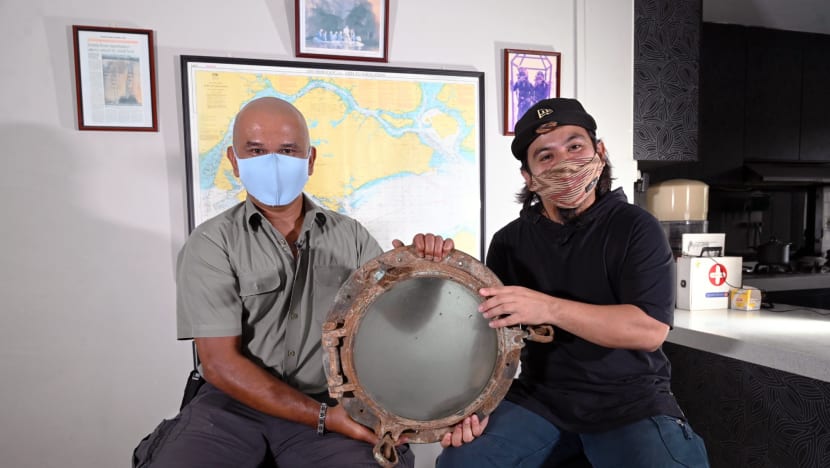
Commercial and salvage divers Ramdzan Salim (left) and Ahmad Qamarulhazman hold a porthole that Mr Ramdzan had taken off a sunken ship. (Photo: Try Sutrisno Foo)
SINGAPORE: The artefacts had lain in the sea near an isolated rock outcrop, undisturbed for centuries.
Then in 2015, commercial and salvage diver Ahmad Qamarulhazman was scanning for debris underwater near Pedra Branca when he saw what looked like a stack of plates.
But they were covered with so much marine growth - algae, molluscs and other organisms - that he thought it may have been a ship’s radiator. Whatever it was, it didn’t look like it belonged there - wedged between rocks at about 8m underwater.
When Mr Ahmad surfaced, he told his supervisor Ramdzan Salim.
READ: 2 historic shipwrecks and their artefacts found in Singapore's territorial waters
That chance sighting led to the discovery of the first ancient shipwreck in Singapore waters, with the largest haul of blue-and-white porcelain from any documented shipwreck in the world.
"IT'S MIND-BOGGLING"
Pedra Branca, located near the eastern entrance of the Strait of Singapore, is off-limits to most people. The subject of a territorial dispute between Singapore and Malaysia since 1979, the Hague determined in 2008 that it belonged to Singapore.
What prompted divers to head down was a maritime accident on Dec 30, 2014.
A Singapore-registered barge, POE Giant 12, had run aground at Pedra Branca due to bad weather. The barge was carrying two bulk loader cranes and they were in danger of toppling on Pedra Branca’s historic Horsburgh Lighthouse.
As part of the salvage operation, the cranes were blown up and the divers were there to clear the debris from the explosions.
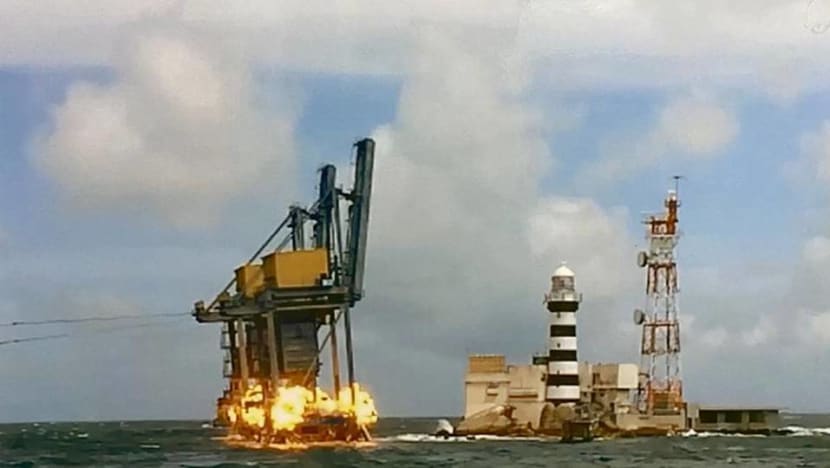
On that salvage operation in 2015, Mr Ahmad had been on his last dive and they were making sure scraps of metal from the demolished cranes were cleared.
Instead, he found celadon plates lost in the sea since the 14th century.
READ: Singapore to proceed with planned development works at Pedra Branca: MND
READ: Singapore, Malaysia continue discussions on implementation of international court ruling on Pedra Branca
Back then, his supervisor Mr Ramdzam was sceptical when he was told about the items Mr Ahmad saw.
The waters around Pedra Branca were rough. How could ceramic or porcelain plates survive such conditions, as well as the construction of the lighthouse in 1851 and the explosions that had just gone off?
“It’s mind-boggling, isn't it?” Mr Ramdzam told CNA in an interview at his home on Wednesday (Jul 7).
“To us, especially, (who were) on the job - we were dealing with explosives … And on the very last day when Ahmad did the post-removal survey, we find fragile stuff still intact - literally like an elephant stepping on an egg!”
“Maybe it's fate - that these things wanted us to find them,” he added.
CLUES FROM EMPRESS PLACE EXCAVATION
When their work was done, a small group of divers went out in a dinghy and retrieved a few marine growth-encrusted plates from the seabed - but it was a mystery what they were and how they ended up there.
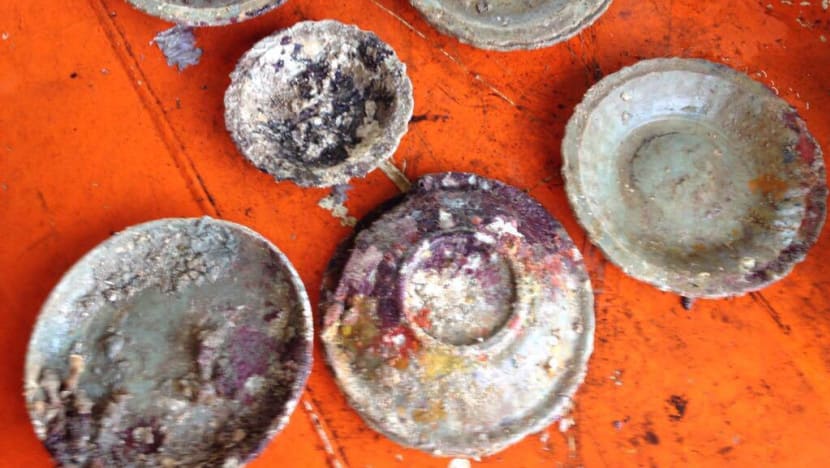
Mr Ramdzan, 49, recounted how at a team dinner later, someone alerted him to television news footage of excavation findings at Empress Place.
He caught only a glimpse of the news broadcast, but when he read the newspapers the next day, he saw a plate that looked exactly like one of those he had retrieved from Pedra Branca.
Archaeologists had discovered Chinese imperial grade ceramics among other artefacts at Empress Place. Lead archaeologist Lim Chen Sian said then that the artefacts could reveal details about life in Singapore before the early colonial days.
Archaeological digs since then have found artefacts dating back to the 13th century, substantiating the belief that Singapore was a trade hub before colonial times.
It took a while for Mr Ramdzan to reach the right person at the National Heritage Board (NHB). At the same time, he had also contacted an auction house. But when someone at NHB got back to him, he turned down an offer from the auction house to evaluate the items.
Mr Ramdzam recalled that they rode to a meeting at the ISEAS – Yusof Ishak Institute with the plates in a box perched on his motorcycle.
“We put them out on the meeting table ... and we can see their amazement ... we'd got some good pieces,” he said.
NERVOUS, UNSURE
Nine months later, Mr Ramdzan and Mr Ahmad, 33, were back at Pedra Branca with a small team from NHB and ISEAS, including Dr Michael Flecker, a visiting fellow at the archaeology unit at ISEAS - Yusof Ishak Institute.
The divers were initially nervous as they were unsure what exactly they had found.
“Could it be that those pieces we first found were the only ones there?” Mr Ramdzan said. “And then we mobilised the whole team ... only to find an empty seabed.”
But Dr Flecker came up from his first dive with a Chinese seal, said Mr Ramdzan, confirming that there was a wreck there. It was later said to be about 100m to the northwest of Pedra Branca.
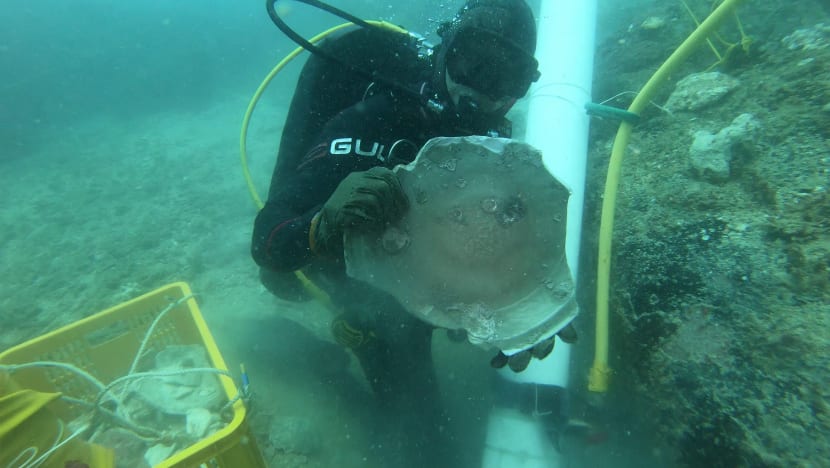
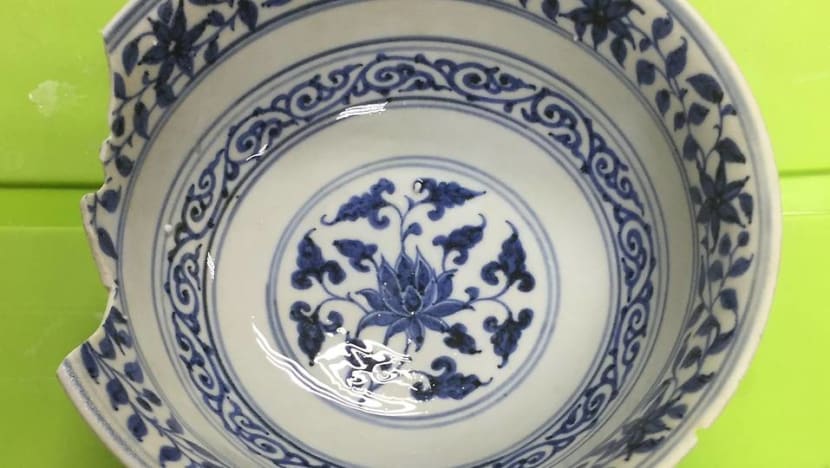
During future expeditions, the treasures that were recovered included Longquan dishes and bowls, as well as blue-and-white porcelain pieces, either whole or in shards. But there were nearly no traces of the vessel that had carried them.
At a press conference revealing the haul on Jun 16, Dr Flecker, who has more than 30 years of experience in marine archaeology, said: “Remarkably, the first ancient shipwreck found in Singapore waters seems to be contemporary with 14th century Temasek.
“Apart from a large cargo of Longquan green-ware and other ceramics, she carried more Yuan dynasty blue-and-white porcelain than any other documented shipwreck in the world. Many of the pieces are rare, and one is believed to be unique.”
That piece was a blue-and-white bottle with a flanged straight neck that was still intact.
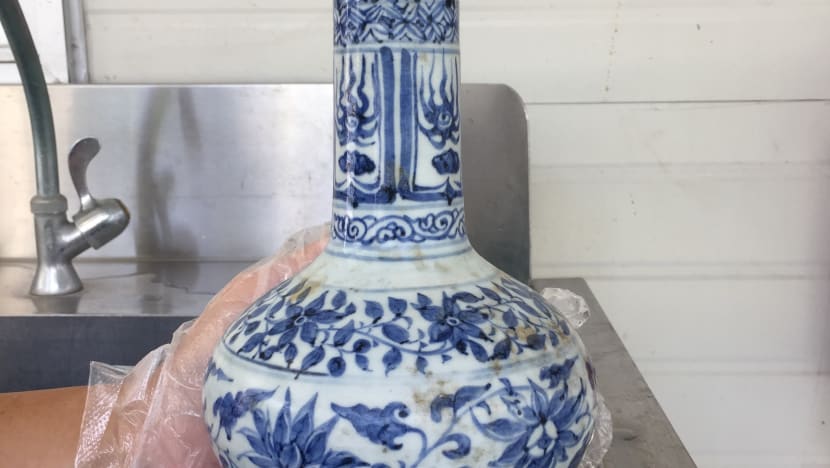
IT TAKES A TRAINED EYE
Juggling work and other commitments, Mr Ramdzan went on six other trips to Pedra Branca with the team over the next five years. But Mr Ahmad could not join any of the expeditions due to his work.
Mr Ramdzan said each trip began at the break of dawn. They would take more than three hours to sail from Singapore to the islet, then do two dives before heading back, reaching the mainland at about 8pm.
Excavation of the shipwreck’s contents went on until 2019, but the team continued work on another shipwreck that was found from detection surveys conducted by ISEAS in the area.
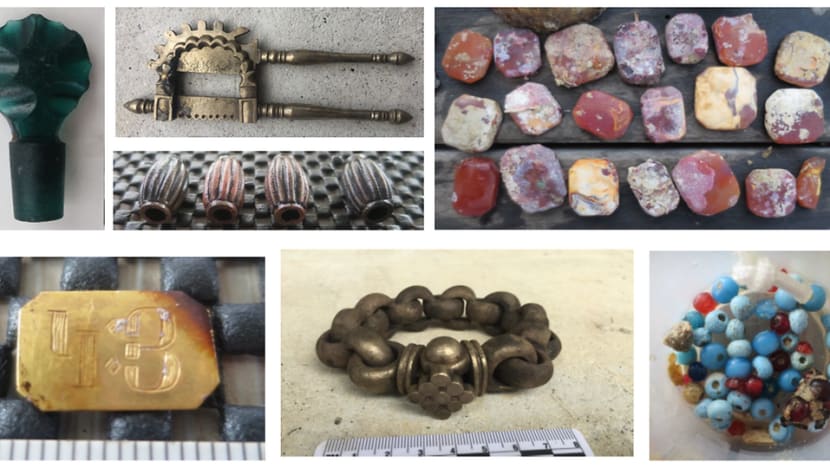
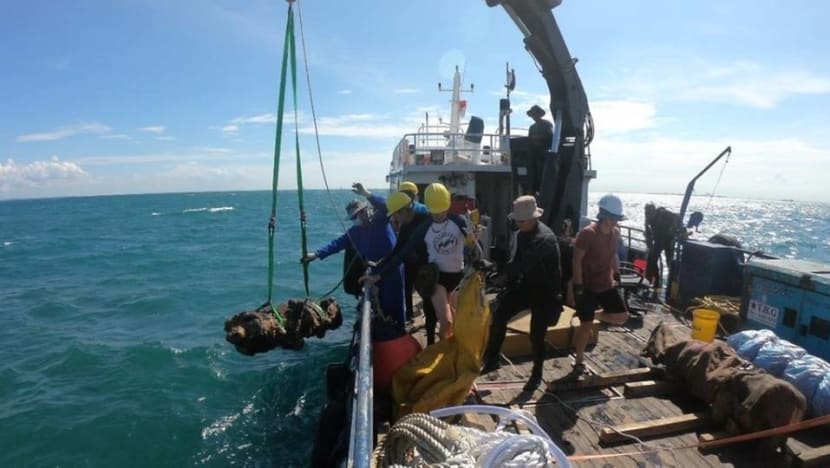
The second shipwreck is likely to be the Shah Munchah, a merchant vessel built in India, which sank while voyaging from China back to India in 1796.
Artefacts recovered from this wreck include Chinese ceramics and copper-alloy, glass and agate objects, as well as anchors and cannons of the ship.
How did delicate porcelain plates and ceramic artefacts lay under the waves for 700 years undiscovered?
Many were hidden in rocks or buried in the seabed, said Mr Ramdzan. For the first shipwreck, the items that were exposed were covered in marine growth or coral and it took a trained eye to recognise the treasures that lay barely 100m from Pedra Branca.
What will go on display at the museum has been thoroughly cleaned and scrapped to reveal the original designs and carvings that lie beneath.
"INDIANA JONES"

A commercial diver since the age of 17, Mr Ramdzan had been on four wreck expeditions, the most memorable being the Tek Sing in 1999. Then, he helped retrieve more than 350,000 pieces of porcelain from the 19th-century Chinese junk, which sank to the bottom of the South China Sea in 1822 off the island of Bangka in Indonesia.
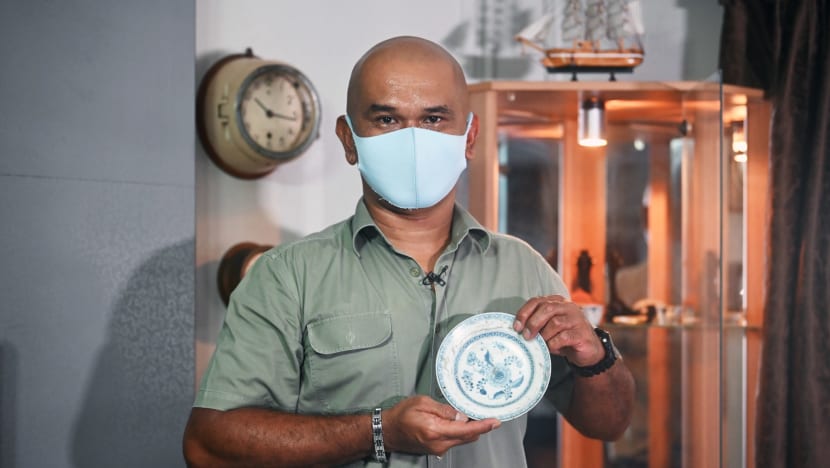
Wreck salvaging is rarer for Mr Ahmad, who in 2015 also joined Dr Flecker in searching for artefacts on the Empress of Asia, which was sunk by the Japanese in 1942. Such jobs are “rare”, he said.
Often, they would be called upon when ships are on fire, had run aground or when there is an oil spill or the threat of one.
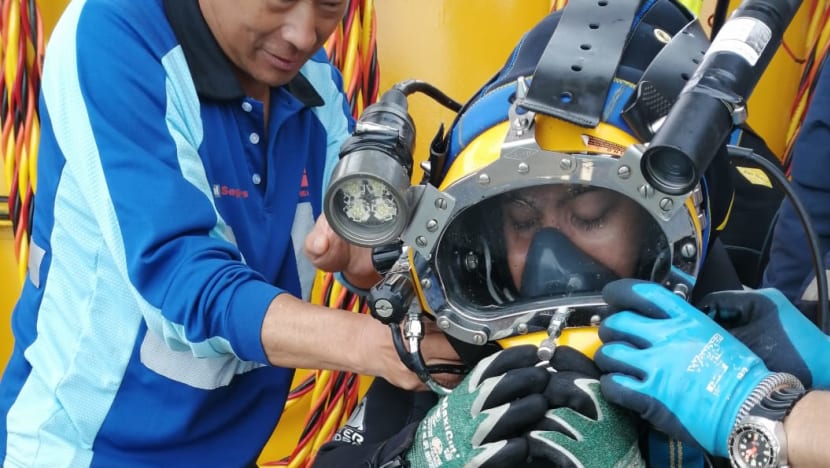
“We respond to disasters globally worldwide pretty much like the fire service,” said Mr Ramdzan.
“Especially in the salvage industry, it's a dirty job ... You'll be diving in oil, you'll be diving in less than ideal conditions, in cargo holds or inside engine rooms,” he said.
“It is very rare that you actually dive in blue or clear waters.”
For them, salvaging wrecks is a “good break” from their daily jobs, said Mr Ramdzan.
And it was clear from Mr Ramdzan’s flat in the west of Singapore that he has a soft spot for things lost underwater. The living room was like a maritime museum, filled with artefacts he has reclaimed from the ocean.
“Someone labelled me as an ‘Indiana Jones’ because most of the things that I collect are novelty items from jobs,” he said.
“Most of the things that I put on display tell a story in their own way and some of them I wouldn't trade for all the riches in the world because I know there's only like one of them.”












